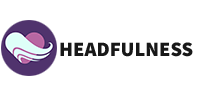4-7-8 Breathing for Anxiety: A Simple and Effective Relaxation Technique
What is the 4-7-8 Breathing Method?
4-7-8 breathing is a breathing technique that involves inhaling for a count of four, holding the breath for a count of seven, and exhaling for a count of eight.
If you’re looking for a simple and effective way to manage stress and improve your well-being, then this breathing exercise might be just what you need.
This technique is easy to learn, and with just a few minutes of practice each day, you can start to experience its many benefits.
Step By Step Instructions for 4-7-8 Breathing
- Find a comfortable seated position, with your back straight and your feet on the ground. You can also lie down if you prefer.
- Close your eyes and breathe in through your nose, counting to four.
- Hold your breath for a count of seven.
- Exhale like you are gently blowing out a candle, counting to eight.
- Repeat the 4-7-8 pattern three more times, or as long as desired.
- Take a moment to notice how you feel, then continue with your day.
4-7-8 Breathing Benefits
4-7-8 breathing has a number of physiological effects that contribute to its effectiveness as a relaxation and stress-reduction technique.
One of the key physiological effects is the regulation of the autonomic nervous system. This system controls the body’s unconscious functions, such as heart rate, blood pressure, and respiration.
By slowing the breath and controlling the exhale, this technique stimulates the parasympathetic nervous system, which is responsible for the body’s “rest and digest” response. This helps to slow the heart rate, lower blood pressure, and promote a sense of calm and relaxation.
In a study of patients after surgery, it was found that the anxiety levels of the 4-7-8 breathing group were lower than the mean scores of the control group.
Why Should You Try 4-7-8 Breathing?
Here are a few reasons why you should give 4-7-8 breathing a try:
- It’s accessible: Unlike some other relaxation techniques, 4-7-8 breathing requires no special equipment or training. You can do it anytime, anywhere, making it a convenient and accessible tool for managing stress and promoting relaxation.
- It’s scientifically proven: The physiological effects have been well documented, and there’s a growing body of research that supports its effectiveness as a stress-management tool.
- It’s simple to learn: Unlike other relaxation techniques, such as meditation or yoga, this breathing technique is very straightforward and easy to learn. With just a few minutes of practice each day, you can quickly become proficient in the technique.
- It’s customizable: 4-7-8 breathing can be adapted to your individual needs and preferences. You can experiment with different breath ratios and hold times to find what works best for you.
- It’s fun: Breathing exercises may sound boring, but the truth is that this breathing exercise can be quite enjoyable. As you practice the technique, you’ll start to feel more relaxed and centered, and you may find that it becomes an enjoyable and beneficial part of your daily routine.
How to include 4-7-8 Breathing in your daily routine
Here are a few suggestions for pairing 4-7-8 breathing with other wellness practices to maximize its benefits:
Practice 4-7-8 during your regular hygiene routines
- Combine with brushing your teeth: Practice 4-7-8 breathing while brushing your teeth in the morning and evening. Breathe in and out through your nose so you don’t make a mess!
- Practice 4-7-8 breathing while showering: Perform a few rounds of 4-7-8 breathing in the shower while washing your hair or body.
Add to things you do every day
- Combine with nutrition: Practice this breathing exercise before or after meals to promote digestive health and relaxation.
- Before bed: Incorporate it into your bedtime routine to promote sleep quality and relaxation. Do the breathing exercise while laying in bed to help fall asleep.
- Integrate with journaling: Use the breathing exercise as a tool to calm the mind and promote self-reflection before or after journaling.
Integrate with your existing wellness practices
- Pair with mindfulness meditation: Practice 4-7-8 breathing before or after a mindfulness meditation session to calm the mind and promote relaxation.
- Combine with physical exercise: Incorporate 4-7-8 breathing into your warm-up or cool-down routine before or after physical exercise.
- Integrate with yoga: Use 4-7-8 breathing to enhance the relaxation and stress-management benefits of your yoga practice.
- Combine with aromatherapy: Use essential oils or scents to enhance the relaxation and stress-management benefits of the technique.
Want to learn more breathing exercises for anxiety?
If you’re looking for a simple and effective way to manage stress and anxiety, then our free e-book, “Breathing Secrets,” is the perfect resource for you.
In this 30 page ebook, you’ll learn how to relieve anxiety in as little as 15 minutes with a simple breathing exercise.
To gain access to this life-changing resource, all you need to do is sign up for our newsletter. As a thank you for joining, you’ll receive a link to download “Breathing Secrets” by email. This means that you’ll have all the information you need to start reducing stress and anxiety right at your fingertips.
So why wait? Sign up for our newsletter today and start your journey to a calmer, more relaxed life. With “Breathing Secrets,” you’ll have the tools and knowledge you need to manage stress and anxiety, no matter what life throws your way. Join us now and see what a difference a simple breathing exercise can make in your life.



